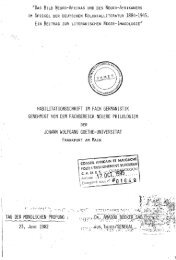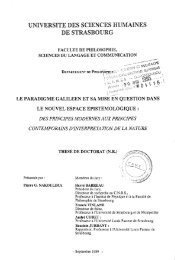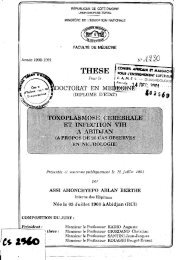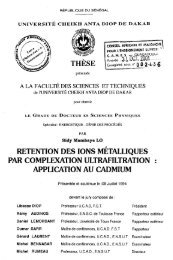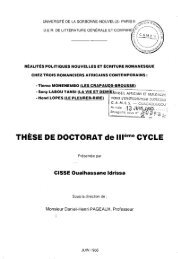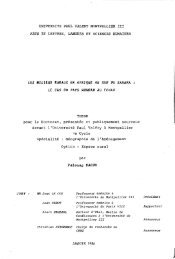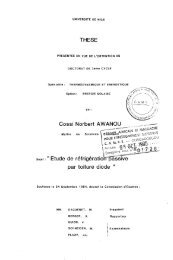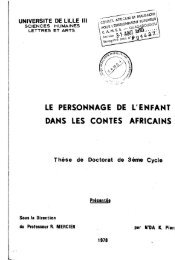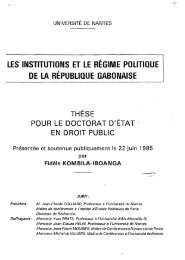by
by
by
You also want an ePaper? Increase the reach of your titles
YUMPU automatically turns print PDFs into web optimized ePapers that Google loves.
The spectroscopie data led to the formulation of partial structures XII and XIII.<br />
Xlla R = H<br />
Xllb R = Ac<br />
CH J<br />
o<br />
The HRMS of anhydroarthrosporone displays a base peak at ml z '22 (C,H100). This<br />
peak may be accounted for via the proposed mechanism in Scheme VII on the assumption<br />
that the partial structure XIV is present in the molecule.<br />
The DC NMR speetrum of anhydroarthrosporone (21 l exhibits two quaternary<br />
carbon signais, one of which bears the gem dimethyl group (XIII). Since one of the<br />
substituents on the carbon {j to the carbonyl in XII is a methyl group (XIV), it follows that<br />
the gem dimethyl group (XIII) can be incorporated in only two ways. Insertion of the gem<br />
dimethyl group between C-' , and C-9 followed <strong>by</strong> bond formation between C-' and C-2<br />
gives rise to structure 35, whereas insertion of the gem dimethyl group between C-' and<br />
C-9 followed <strong>by</strong> bond formation between C-2 and C-' , gives rise to structure 36.<br />
Ali the spectroscopie data presented for anhydroarthrosporone acetate (34) is<br />
consistent with either a hirsutane skeleton (35) or with skeleton 36. In addition the lH NMR<br />
spectrum of acetate 34 shows deshielding of three protons and one of the singlet methyls<br />
with respect to the lH NMR spectrum of 21. For each of structures 35 or 36 the<br />
deshielded protons would be those vicina/ and cis to the acetoxyl group. Thus the<br />
XIII<br />
27



